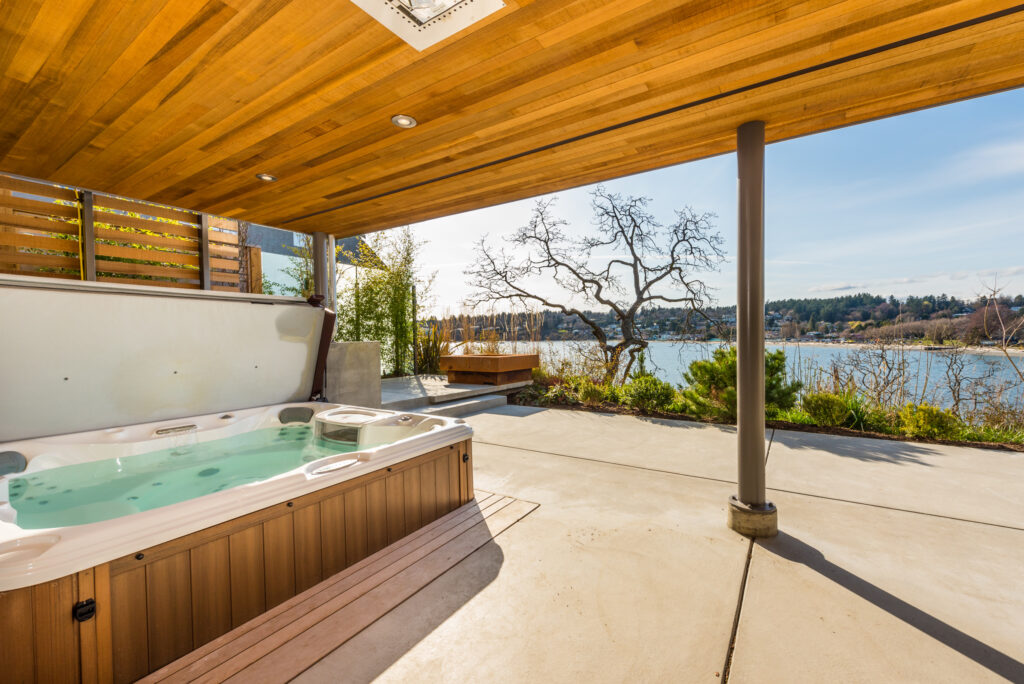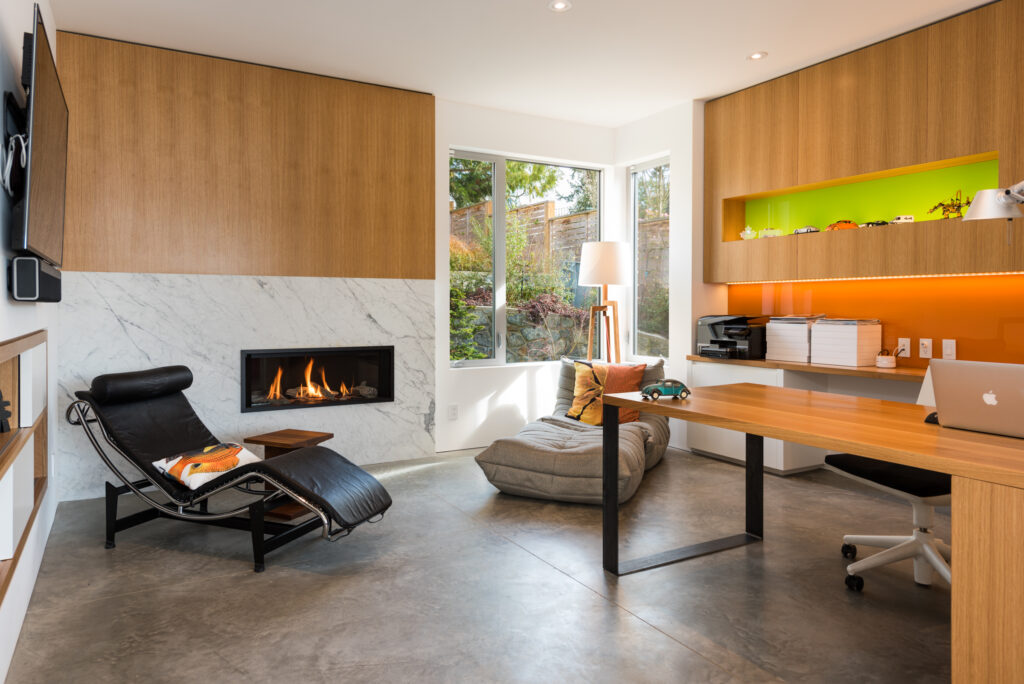Top 7 Must-Have Features for Long-Term Family Living in a Custom Home
Designing a Custom Home That Supports Your Family Today — and Tomorrow
When families relocate to Vancouver Island, the goal is often more than just a change of scenery — it’s about investing in a better lifestyle, more space, and a home that can grow with them. Building a custom home offers the unique opportunity to create something tailored specifically to your family’s present needs and future goals.
Whether you’re moving to the Cowichan Valley, Maple Bay, or Shawnigan Lake, thoughtful design matters — and local conditions can shape those design choices in meaningful ways.
1. Flexible Multi-Purpose Rooms
Your family’s needs will evolve — and so should your home. Designing adaptable spaces ensures your home remains functional as children grow, work situations shift, or multigenerational living becomes a consideration. For instance, a guest bedroom can double as a playroom or homework zone. A finished basement or loft can transition from a media room to a teen hangout or in-law suite. Even sliding doors or built-in cabinetry can define open-concept areas to serve multiple purposes.
In areas like Cowichan Bay and Crofton, where family homes often come with larger lots, these spaces can even extend into detached garages or garden studios, offering more privacy and flexibility than typical suburban homes. Including built-in shelving, pocket doors, or retractable furniture can also allow a space to transition from formal to casual use effortlessly.
Design Tip: Choose furniture that supports dual purposes — such as fold-away desks, modular seating, or a murphy bed in guest spaces — to maximize flexibility.
2. Smart Storage Solutions
Busy families need accessible storage to keep clutter at bay and support long-term organization. Built-in mudroom cabinetry with seating, walk-in pantries with adjustable shelving, and integrated cabinetry in living areas can all contribute to a tidier, more peaceful home environment. These storage elements support both daily routines and long-term habits that help a home stay functional as a family grows.
For those living in places like Lake Cowichan or Duncan — where outdoor activities like hiking, paddling, or biking are part of everyday life — smart storage solutions also mean planning for seasonal gear, sports equipment, and even gardening tools. Having dedicated storage for lifestyle-specific needs can reduce wear on interior spaces and keep entry points functional. Custom bench seating with hidden compartments or vertical racks in utility areas can make storage more efficient without sacrificing style.
3. Covered Outdoor Living Areas
Outdoor living is a way of life on Vancouver Island, and year-round usability is especially valuable for active families. Covered patios and decks with weather-resistant finishes, outdoor kitchens, and fireplaces or built-in heaters extend the comfort of indoor spaces into the open air. These areas become hubs for family time, dining, and relaxation — all while embracing the Island’s natural beauty.
In places like Shawnigan Lake or Maple Bay, covered spaces are essential for making the most of the region’s mild, wet winters. Designs that integrate retractable screens, heated floors, or partially enclosed lounges help maintain comfort without cutting off views or airflow. Including ceiling fans and lighting also supports functionality during summer evenings and darker winter afternoons.
Island Insight: Incorporating durable, marine-grade materials ensures your outdoor space withstands wet coastal conditions while retaining its finish.

4. Energy-Efficient Systems
Energy-efficient homes are not only more sustainable, but they also support long-term financial and environmental goals. High-performance windows, zoned heating and cooling systems, on-demand hot water, and solar panel readiness all contribute to a home that’s as practical as it is forward-thinking. As energy prices fluctuate, these features also offer savings that make a real difference in a family’s budget over time.
Families relocating to regions like Cobble Hill or Chemainus often seek homes that align with values around sustainability and land stewardship. Incorporating energy-efficient systems from the outset demonstrates a commitment to these values and helps ensure future resale appeal in environmentally aware communities. Choosing local, sustainable materials — such as BC-milled wood or recycled stone — can further enhance environmental impact without compromising quality.
5. Dedicated Home Office Space
Remote work is no longer a temporary solution — for many families, it’s the new norm. A purpose-built home office enhances productivity and offers the privacy needed for daily operations. Sound insulation, built-in shelving, natural light, and a thoughtful layout all play a role in creating a workspace that supports professional life without disrupting family life.
This is especially important for those settling in quieter residential areas like North Cowichan or Ladysmith, where fewer local co-working spaces may make a strong home office setup essential for maintaining career flexibility while enjoying a slower pace of life. Parents may also appreciate a dual-purpose workspace that allows for supervision of homework or virtual learning when needed.
Pro Tip: Position your office with a window facing greenery — views of nature have been shown to boost focus and reduce stress during long workdays.

6. Spacious Mudroom or Drop Zone
An organized entry point makes a big difference in a busy household. Mudrooms act as a buffer between outdoor mess and indoor living. Durable flooring, easy-to-clean surfaces, and tailored storage like hooks, lockers, and shelving create a functional space that helps mornings run smoother. When paired with an adjacent laundry or utility room, this area becomes the family’s daily command centre.
For families in Vancouver Island communities known for outdoor exploration — like the trails around Goldstream or the lakes in the Cowichan Valley — these spaces are essential. A thoughtfully designed mudroom keeps your living spaces protected from muddy boots, wet gear, and pet mess. Adding built-in drying racks or ventilated cubbies can enhance practicality, especially in the rainy season.
7. Accessible Layout for All Ages
Whether planning for grandparents to visit, aging in place, or future mobility needs, accessible design adds longevity to your home. Wide hallways, a main floor primary suite, and no-step entries or barrier-free showers allow for ease of use at any stage of life. These design decisions ensure your home continues to serve your family for decades to come.
This is particularly valuable in retirement-friendly communities like Mill Bay or Crofton, where multigenerational families often share space or plan for aging parents to move in. Even if not immediately necessary, accessible design helps ensure future transitions are smooth and cost-effective. Elements like rocker light switches, lever door handles, and walk-in tubs are small touches that make a big impact over time.
8. Future-Ready Technology Integration
Today’s families rely on technology more than ever, and that trend is only expected to grow. Planning for built-in tech features can help your home stay relevant and connected in the years to come.
Integrated smart lighting, security systems, whole-home audio, and climate control not only improve comfort and safety, but they also allow for remote control and automation. In custom homes, these systems can be discreetly designed into the infrastructure for a seamless experience.
In areas with more rural pockets — like the outer edges of Cowichan Valley — future-ready tech can also bridge the gap between convenience and connectivity. Smart systems like monitored security, leak detection, or power management help residents maintain peace of mind while embracing a more private or nature-oriented setting. Planning for redundant internet solutions, such as cellular boosters or satellite backup, may also help ensure uninterrupted connectivity in more remote locations.
Tech Tip: Build in empty conduit paths during framing — this allows for easy upgrades as technology evolves without cutting into walls later.
Building a Home That Grows With You
Every family is different, but most share a common goal when building a custom home: to create a space that feels right for today and is ready for tomorrow.
By planning with flexibility, functionality, and lifestyle in mind — and by understanding how Vancouver Island’s unique geography and climate influence design — families can ensure their homes remain comfortable and practical for years to come.
FAQs
How do I future-proof a custom home for a growing family?
Focus on flexible room layouts, accessible design, and storage solutions that evolve with changing needs.
Are energy-efficient features worth the investment?
Yes — they lower utility bills, reduce environmental impact, and often increase resale value.
Should I include accessibility features even if I don’t need them now?
Yes — incorporating accessibility at the design stage is easier and more cost-effective than retrofitting later.
What’s the benefit of a covered outdoor space in a rainy climate?
It allows year-round outdoor enjoyment and makes entertaining easier regardless of the weather.
Is a mudroom necessary in a custom family home?
Absolutely. It keeps your main living areas clean, supports daily routines, and adds long-term convenience.